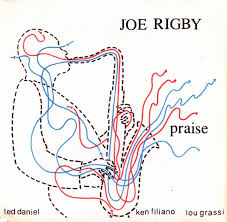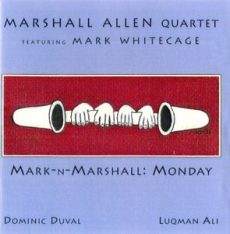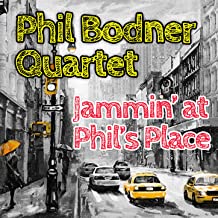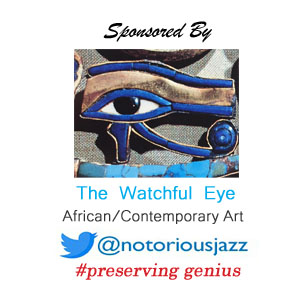
Daily Dose Of Jazz…
Vinnie Dean was born Vincent Nicholas diVittorio on August 8, 1929 in Mount Vernon, New York. He was primarily an alto saxophonist, but also played flute and piccolo.
After World War II he played in New York City with Shorty Sherock and Johnny Bothwell, and recorded with Charlie Spivak and Charlie Barnet in the late 1940s. The 1950s saw him playing with Elliot Lawrence, Stan Kenton, Ralph Burns, and Eddie Bert, recording with all of them.
He was less active from the late-1950s, but still performed or recorded later in his career with Hal McKusick, Ray McKinley, Urbie Green, Sal Salvador, and Benny Goodman, as well as returning to play with Lawrence and Barnet.
From the 1960s onward he was involved in the music business, operating a publishing outlet, a booking agency, a recording studio, and a vinyl shop. Alto saxophonist Vinnie Dean died in Danbury, Connecticut on September 14, 2010 at the age of 81.
More Posts: flute,history,instrumental,jazz,music,piccolo,saxophone

Daily Dose Of Jazz…
Joe Rigby was born on September 3, 1940 in Harlem, New York and grew up in the Sugar Hill neighborhood where his neighbors included Johnny Hodges, Sonny Rollins, Jackie McLean, and Kenny Burrell. He started playing piano when he was six and began playing flute and clarinet in high school. His focus eventually switched to the saxophone after hearing John Coltrane and Charlie Parker.
Graduating from the College of Staten Island he earned a bachelor’s degree in Music and a minor in Music Education. Rigby would go on to study privately with Joe Allard, Garvin Bushell, and Anders Paulsson. He taught instrumental music with the New York City Board of Education from 1989 until he retired in 2004, and was named New York’s Music Teacher of the Year in 1996.
Performing on alto, soprano, baritone and sopranino saxophone, Joe began performing professionally with Milton Graves, Johnny Copeland, and Steve Reid, with whom he led the Master Brotherhood. In the late 1970s, he formed and led his own group, Dynasty.
Establishing his Homeboy record label, he released a record with trumpeter Ted Daniel, and the album Music as a solo artist in 2009. The same year he recorded on French label Improvising Beings, releasing For Harriet with a quartet which included bagpiper player Calum MacCrimmon.
Tenor, alto, baritone, soprano and sopranino saxophonist Joe Rigby, who also plays flute and piccolo, died on July 16, 2019 at the age of 78.
More Posts: bandleader,flute,history,instrumental,jazz,music,piccolo,saxophone

Daily Dose Of Jazz…
Marshall Belford Allen was born in Louisville, Kentucky on May 25, 1924. During World War II he enlisted in the 92nd Infantry Division and was stationed in France. He studied alto saxophone in Paris, France and played in Europe with Art Simmons and James Moody.
Best known for his mastery of explosive, jarring, chaotic sound effects on the alto saxophone, the opportunity came to create a long association with Sun Ra, with whom he performed almost exclusively from 1958 to Ra’s death in 1993. Marshall recorded with Paul Bley in 1964 and Olatunji during the mid-1960s.
Since Sun Ra death Allen has led the Arkestra and has recorded two albums. Allen often appeared in New York-area collaborations with bassist Henry Grimes, and participated in the Innerzone Orchestra with Francisco Mora Catlett, Carl Craig and others in an appreciation of Sun Ra’s music.
In 2022, the building at 5626 Morton Street known as the Arkestral Institute of Sun Ra was listed as a historic landmark in the Philadelphia Register of Historic Places. Free and avant-garde jazz alto saxophonist Marshall Allen, who also plays flute, oboe, piccolo, and EWI, at the age of 99 continues to live at the Institute, which has been his home since 1968.
More Posts: bandleader,ewi,flute,history,instrumental,jazz,music,oboe,piccolo,saxophone

Daily Dose Of Jazz…
Eric Marienthal was born on December 19, 1957 in Sacramento, California but moved with his family to San Mateo, California when he was two years old. He was taught music while in school and picked up the saxophone in the fourth grade. His father bought him a $400 Selmer saxophone and enrolled him in Corona Del Mar High School. Throughout his education, he learned to play guitar, flute, clarinet and piano.
After graduating from high school he studied saxophone at the Berklee College of Music. By the time he left Berklee, Eric had achieved the highest proficiency rating given by the school. He began his professional career in 1980 with New Orleans trumpeter Al Hirt. Heading west he settled in Los Angeles, California and became a member of the Chick Corea Elektric Band. He recorded six albums with that band and two of them won Grammy Awards.
Marienthal has also written instructional books, including Comprehensive Jazz Studies & Exercises, The Ultimate Jazz Play Along, and The Music of Eric Marienthal. He has made instructional videos, Play Sax From Day One, Modern Sax and Tricks of the Trade. He occupies the lead alto chair of Gordon Goodwin’s Big Phat Band, playing alto saxophone, soprano saxophone, flute, and piccolo.
Grammy Award-nominated alto saxophonist Eric Marienthal continues to perform and record.
More Posts: bandleader,flute,history,instrumental,jazz,music,piccolo,saxophone

Daily Dose Of Jazz…
Philip L. Bodner was born June 13, 1917 in Waterbury, Connecticut and played in the Forties and 1950s as a sideman for studio recordings in New York City. He played on jazz sessions with Benny Goodman, with Miles Davis and Gil Evans in 1958.
Organizing The Brass Ring, a group modeled after Herb Alpert, in the mid-1960s they had popular success. Bodner also played with Oliver Nelson and J.J. Johnson during that decade. His associations in the 1970s included Oscar Peterson, Yusef Lateef, Peanuts Hucko, Wild Bill Davison, Ralph Sutton and he also played the signature piccolo part on the disco hit The Hustle by Van McCoy. Other work in the 1970s included playing with Ralph Sutton and Johnny Varro, working with Mingus Epitaph, and arranging Louie Bellson’s tribute to Duke Ellington’s Black, Brown and Beige.
The 1980s saw him working in a swing style with Marty Napoleon, Mel Lewis, George Duvivier, Maxine Sullivan, and Barbara Carroll. He released an album under his own name, Jammin’ at Phil’s Place, on Jazzmania Records in 1990, with Milt Hinton, Bobby Rosengarden, and Derek Smith as sidemen.
Multi-instrumentalist and studio musician Philip Bodner, active in jazz and popular music idioms. Best known as a reedist, he played clarinet, saxophone, oboe, English horn, piccolo, flute, conductor and arranger passed away on February 24, 2008 at age 90 in New York City.
More Posts: clarinet,english horn,flute,history,instrumental,jazz,music,oboe,piccolo,saxophone





